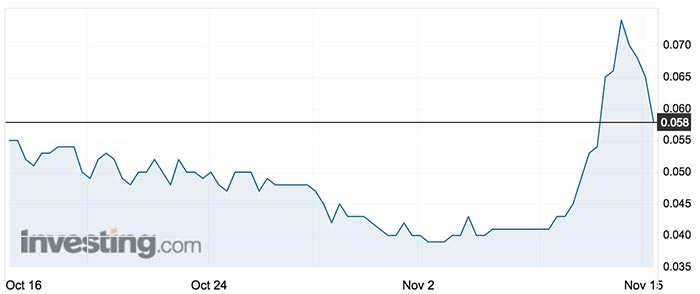Kiwi jetpack maker hits turbulence as share price takes off

Pic: Thinkhubstudio / iStock / Getty Images Plus via Getty Images
Jetpack maker Martin Aircraft has been pinged by the ASX after its share price rose by as much as 75 per cent.
The Kiwi aviation engineers (ASX:MJP) jumped from at 4c to 7.5c this week, before settling back to 5.8c on Wednesday.
While the company maintains there is nothing to report, the share price movements come at a time of transition for the company.

Chairman Jon Mayson and board member Steve Bayliss resigned from their positions earlier this month, leaving just three directors — two of whom hold positions with Hong Kong joint venture partner, KuangChi Science.
In an address to shareholders at their AGM, the outgoing chairman said the time was right to step aside.
“Steve Bayliss and I have considered the future demands of the company as it aims to transition into regular capability demonstrations, continue development of the Jetpack’s technical performance and transition to a global aviation company,” Mr Mayson said.
“The company plans to immediately commence a search for two additional directors with the necessary global aviation and capital raising experience needed to take the business forward.”
While the current Series 1 aircraft is not certified, the Hong Kong backer believes it is sufficient, with a few improvements, to achieve revenues through paid flight demonstrations in China.
Testing earlier this year confirmed a “limited performance” of the current rotary engine with an approximate 10-hour time between overhauls compared to alternate turbine engines which last as many as 1500 hours.
At the time, the Chairman said it would take a further three years and $50 million to incorporate a certified engine into the Series 2 model — a move that has been put on the backburner to move towards commercialisation of the initial model and a potential capital raising in China.
The company made a $NZ24 million ($22 million) loss last year and took out a $NZ10 million loan from their backers to operate for the next 12 months.
Chief executive James West said they were evaluating all operational costs and hinted at the potential for de-listing.
“This may include reviewing significant items of expenditure such as the costs of maintaining a listing on the ASX platform as opposed to alternate liquidity mechanisms,” he said.
UNLOCK INSIGHTS
Discover the untold stories of emerging ASX stocks.
Daily news and expert analysis, it's free to subscribe.
By proceeding, you confirm you understand that we handle personal information in accordance with our Privacy Policy.








